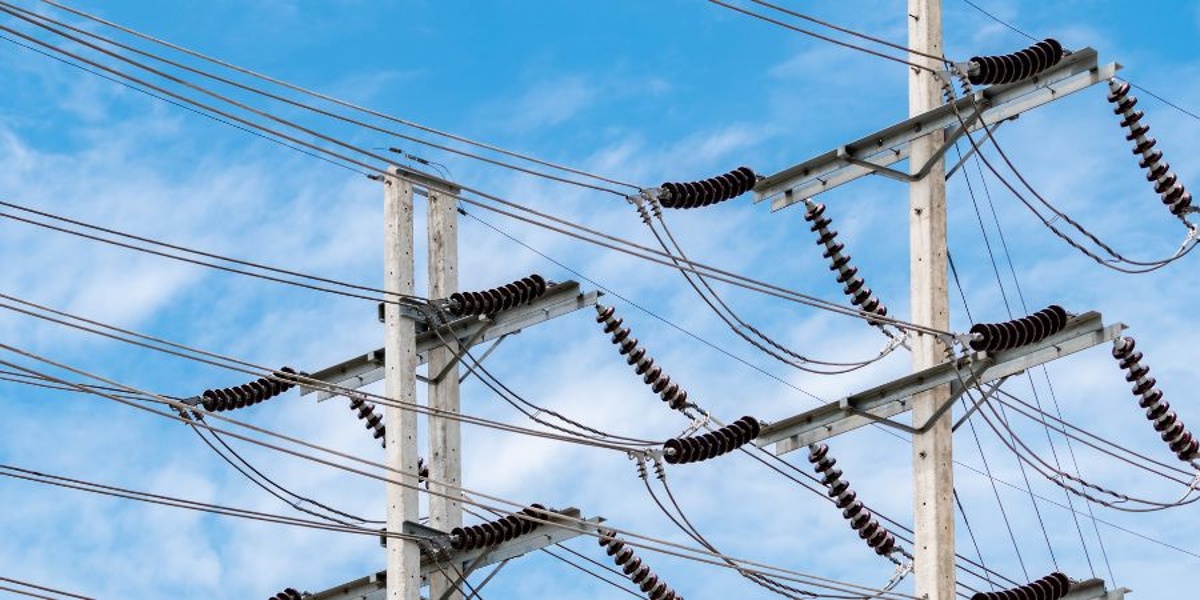Energizing Opportunities: Exploring the Electricity Supply Landscape
Rapid and transformative changes are shaping the world of energy supply. In this comprehensive overview, we'll navigate the significant strides in technology, such as smarter grids and advanced energy storage, that are revolutionizing the industry. We'll examine the global regulatory push towards sustainability and the rise of informed consumers demanding eco-friendly options. Lastly, we'll discuss the evolving investor sentiment steering away from traditional, carbon-heavy assets towards sustainable ventures.
A Rapid Transition
The past decade in the energy landscape is reminiscent of a whirlwind. Not only has it been filled with swift transitions but also, and more importantly, with transformative ones. At the heart of this change lies the world’s energy systems, which have seen an overhaul like never before.
Technology has played a protagonist in this narrative. From the development of smarter grids to the rise of energy storage solutions, advancements have redefined what's possible. Solar technologies, once nascent and expensive, have matured, allowing for more widespread adoption. Simultaneously, battery storage solutions have grown more efficient, addressing the intermittency issues that plagued renewable energy sources.
Regulations, too, have evolved, reflecting a global sentiment leaning toward sustainability. Governments worldwide are setting aggressive targets for carbon neutrality, leading to tighter controls on carbon-heavy industries and promoting cleaner alternatives. These regulatory changes, often accompanied by incentives for green energy initiatives, have further accelerated the shift in the energy paradigm.
But what's an industry without its consumers? Today’s energy consumers are vastly different from those a decade ago. More informed and environmentally conscious, they demand green energy solutions, not as a luxury but as a norm. This change in consumer behavior, aided by decentralized energy solutions, has transformed the once passive consumers into active participants, often producing their own energy and feeding excess back into the grid.
Investor sentiment is the final cog in this wheel of change. In the face of undeniable climate change evidence, investors are becoming increasingly wary of backing traditional, carbon-intensive energy sources. The focus has now shifted towards sustainable energy ventures, which promise not only environmental dividends but often financial ones, too.
Yet, with all these simultaneous changes, an inherent challenge arises: balancing demand and supply. As regions adapt at different paces and scales, disparities emerge. For instance, while one region might see an oversupply due to rapid renewable energy adoption, another might grapple with shortages due to lagging infrastructure. Such disparities, currently visible in the form of price fluctuations in energy commodities, underline the complexities of managing this global transition.
The Evolving Landscape of Energy Supply
.jpg?width=547&height=287&name=Blog_Graphic_3PercentGrowth%20(1).jpg) Between 1950 and 2000, the world saw an unprecedented surge in global energy demand, growing at a compound annual rate of nearly 3% a year, in tandem with the rise in living standards in developed Western economies.
Between 1950 and 2000, the world saw an unprecedented surge in global energy demand, growing at a compound annual rate of nearly 3% a year, in tandem with the rise in living standards in developed Western economies.
However, predicting this demand is becoming increasingly complex. No longer is there a straightforward correlation between industrial growth, energy consumption, and GDP rise. Environmental sustainability, driven by both societal concern and commercial necessity, has fostered the emergence of innovative, non-carbon-emitting power generation technologies.
Add to this the monumental strides in energy efficiency, and it's clear that electricity, especially from renewable sources, will outpace the demand for any other energy source in the foreseeable future.
The Gap Between Renewables vs. Fossils Isn’t As Big As It Once Was
There was a time when venturing into the realm of renewable energy was akin to entering an expensive gamble. Historically, the generation cost associated with renewable sources, particularly solar and wind, was perceived as their greatest limitation. Expensive infrastructure and nascent technologies meant that to make these energy sources viable on a utility-scale, significant government subsidies and incentives were often required. These support systems, though necessary, painted renewables as an underdog in the global energy race.
But as the adage goes, "Time changes everything."
As we navigate the present era, the energy landscape bears little resemblance to its past. Advancements in renewable technologies, economies of scale from expanded production, and increasing efficiency have converged, culminating in a significant drop in generation costs. This rapid cost descent for renewables, juxtaposed against the relatively stagnant or even increasing prices of extracting and processing fossil fuels, has led to a momentous tipping point. Today, harnessing energy from the sun and wind isn't just environmentally prudent; it's economically sound.
Highlighting this shift is the global trend towards price parity — or even advantage — for renewables. And this isn't just limited to regions with abundant sun or wind. Take the UK, for instance. Traditionally not seen as a sun-drenched region, it has nevertheless witnessed renewable energy make significant inroads. The economics are now so favorable that newly constructed onshore wind power projects are competitive and often cheaper than existing fossil fuel-based power stations.
It's important to understand that this isn't a transient phase. Predictions and market analyses project that as research continues, efficiencies improve, and investments in green infrastructure grow, this cost gap between renewables and fossil fuels is set to expand even further.
Bring in Technology for Energy Opportunities
Gone are the days of manually reaching out to suppliers with pricing requests or negotiating over phone calls. The dawn of software platforms has revolutionized the way energy consultants operate, leading to enhanced efficiency and streamlined operations. The energy sector is undergoing a metamorphosis shaped by technological advances, evolving consumer expectations, and industry transitions.
With change, however, comes immense opportunity. The emphasis on digitization and data analytics underscores that a data-driven future awaits the industry. Integrating energy management software is no longer a luxury but a necessity for businesses looking to remain relevant and competitive.
Staying Ahead of Retail Energy Possibilities
In the ever-evolving landscape of retail energy, staying ahead means embracing change, harnessing technology, and navigating shifts with agility. The electricity supply landscape is teeming with opportunities for those willing to adapt and innovate.
Finally, we understand that managing commissions in the energy sector can be daunting. But fret not. Download our guide on the "Top 7 Ways to Handle Your Energy Commissions Without Having to Spend Your Life Fielding Complaints" and revolutionize your commission management process today.
Share this
You May Also Like
These Related Stories

How Power Suppliers Can Boldly Change the Electricity Utilities Landscape

Powering Ahead: Exploring Opportunities in the Retail Energy Market


